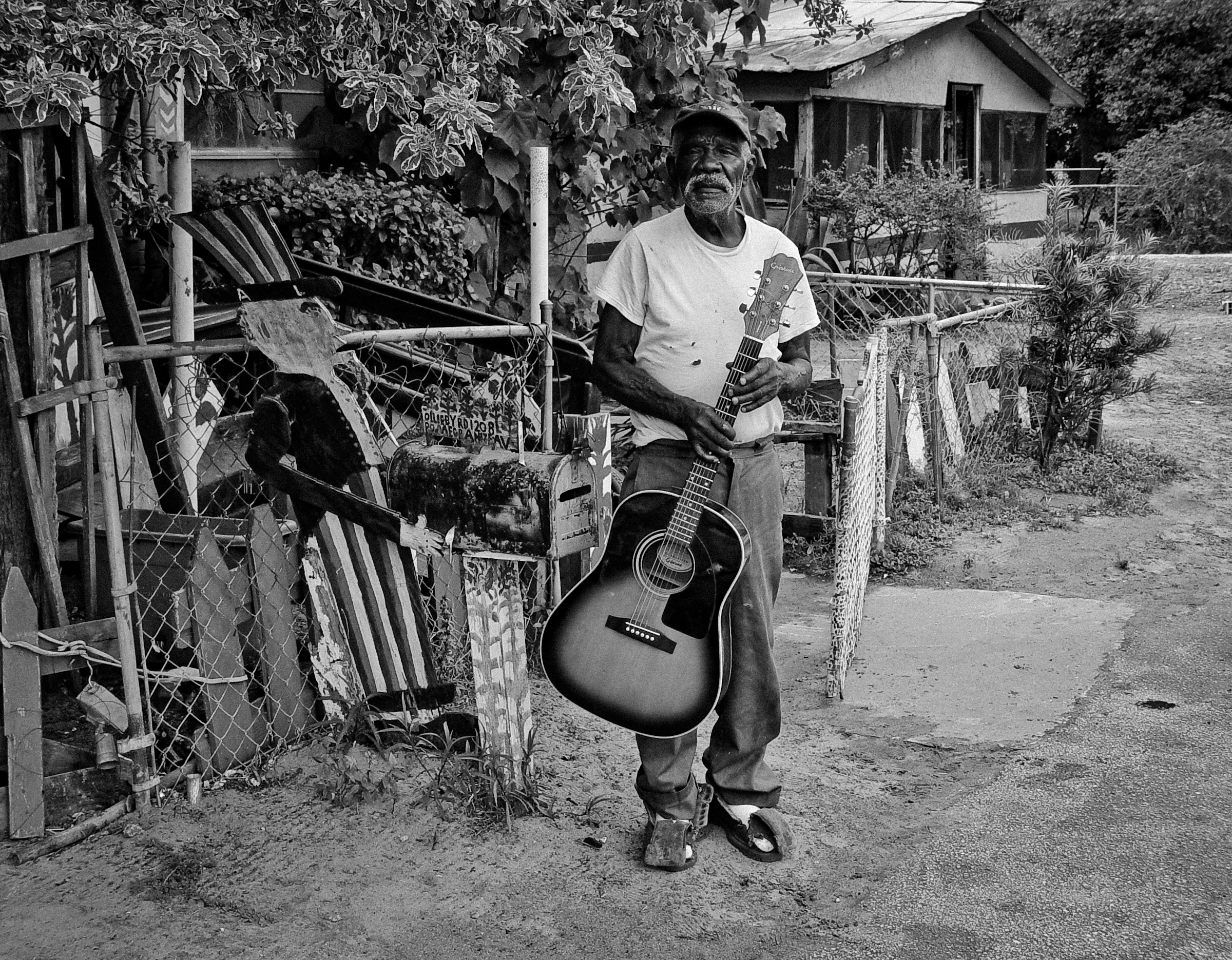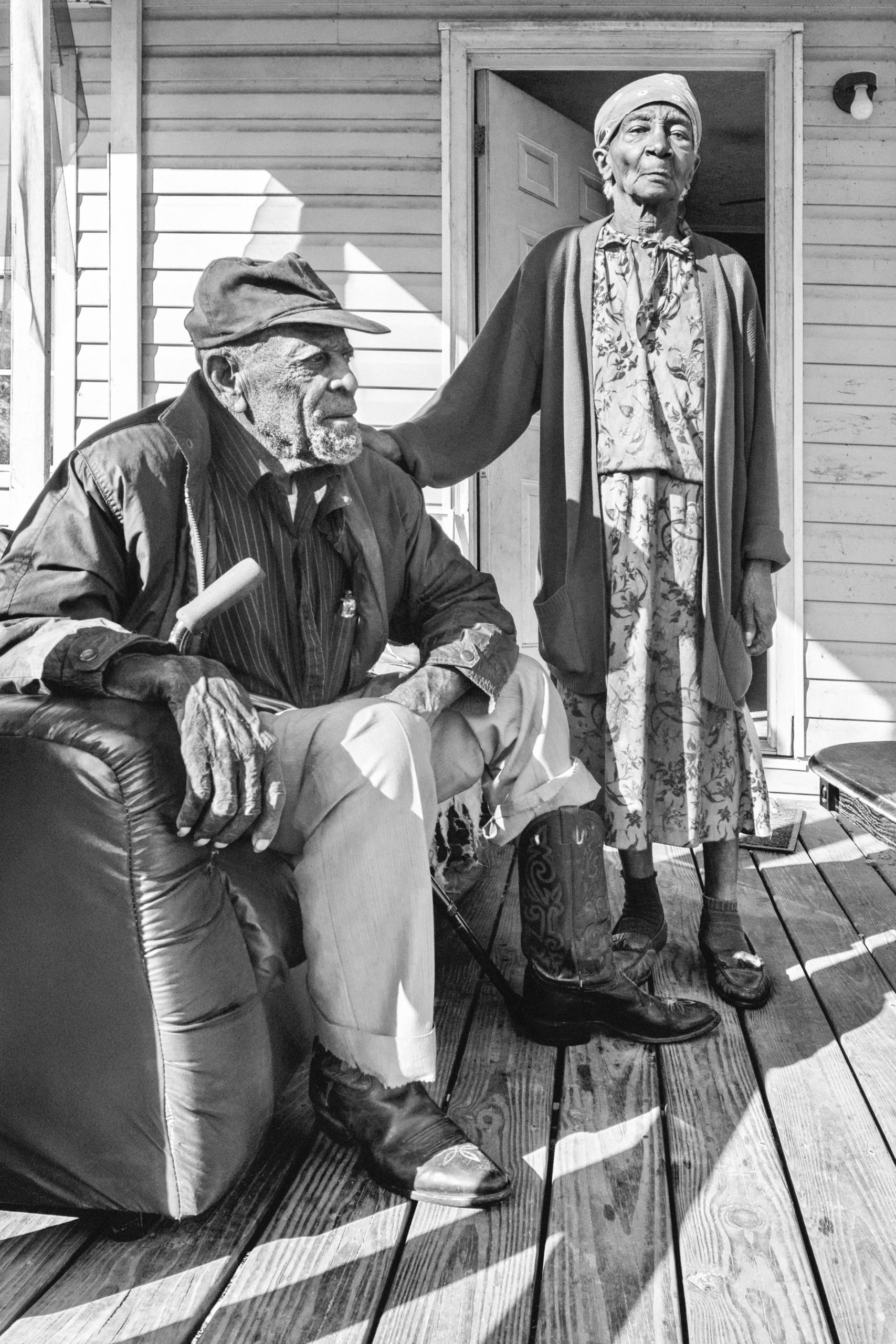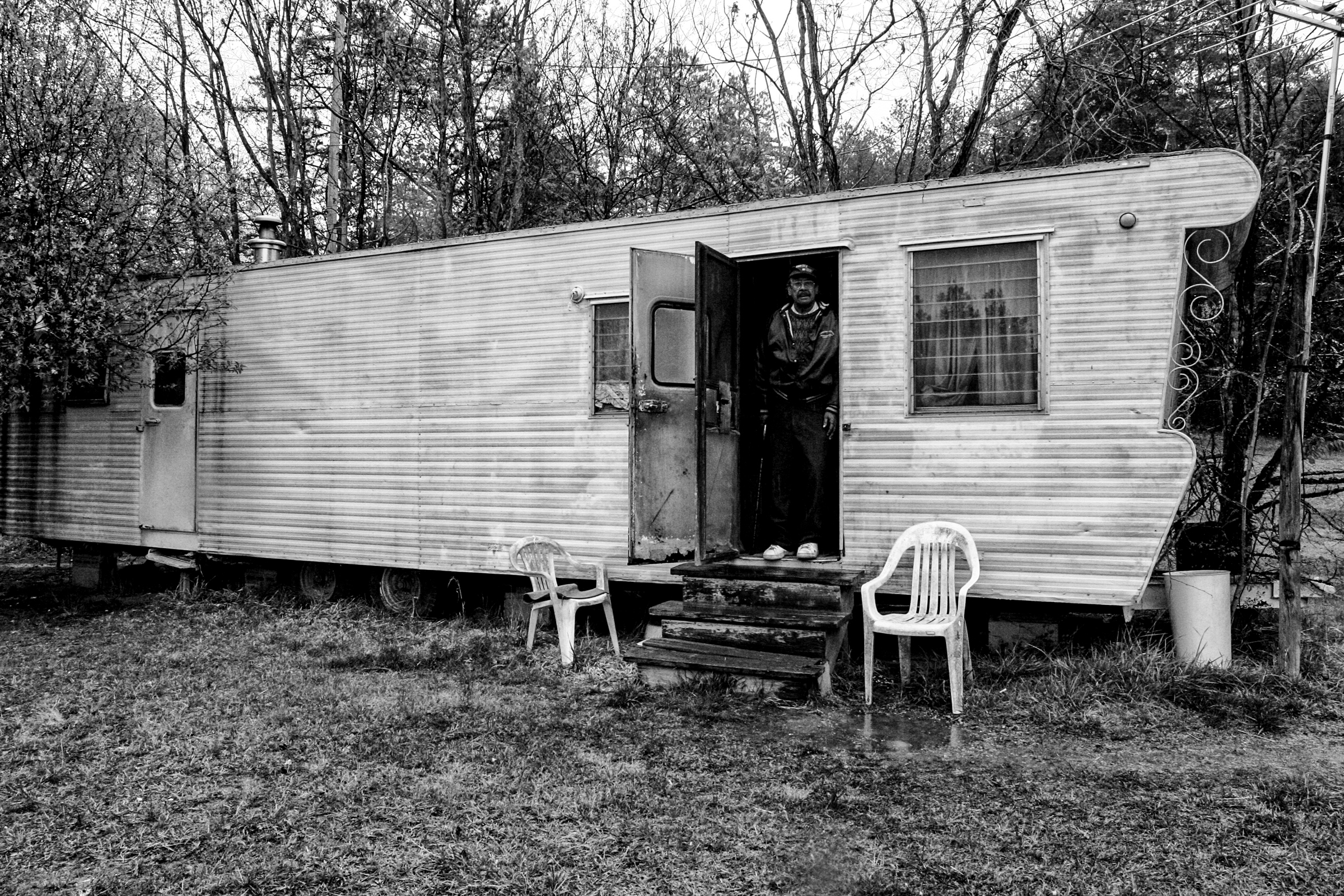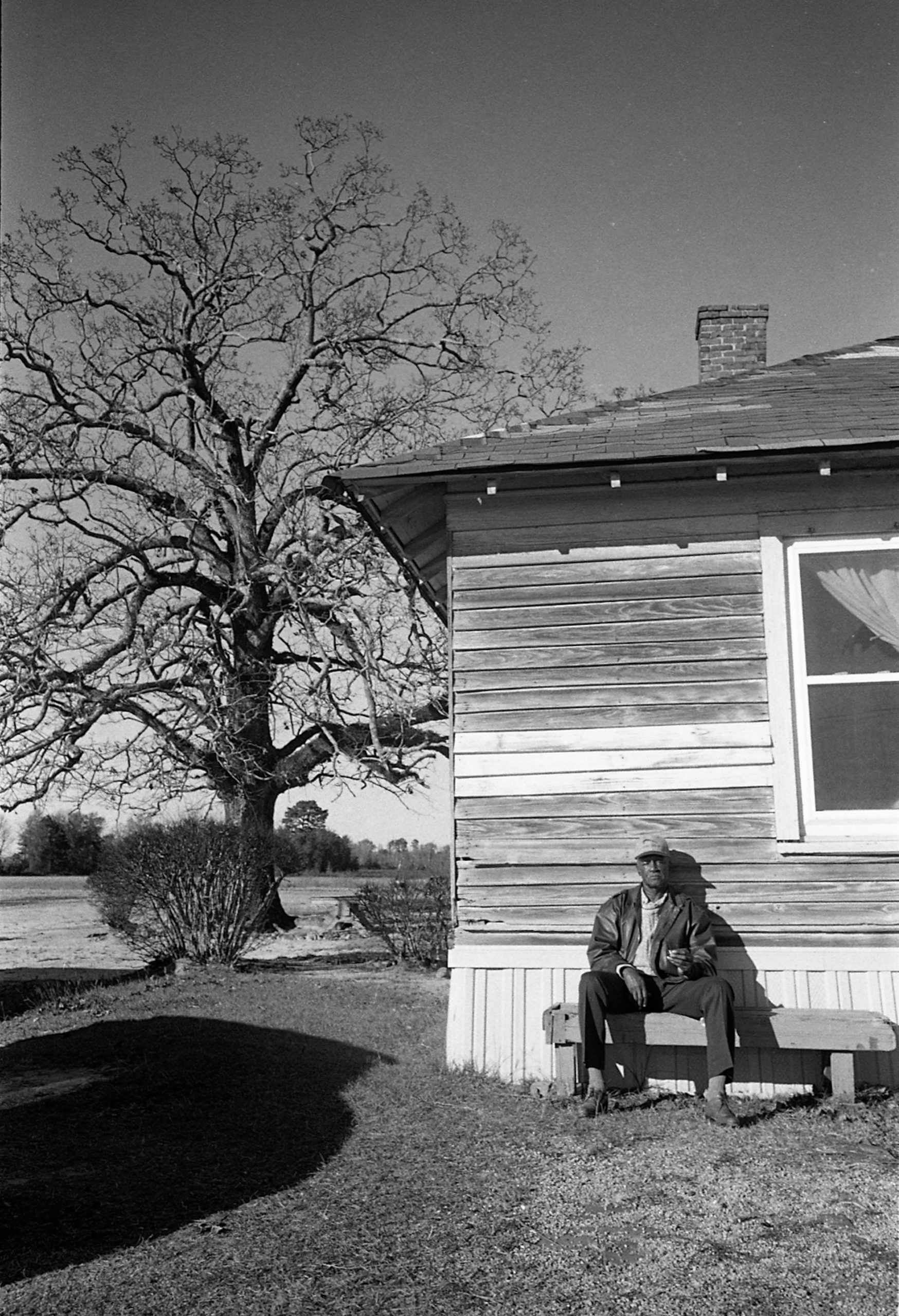Rural Black Life in the U.S.

By Dr. Will Boone, Lecturer of Music, North Carolina State University.
Freeman Vines’ life and work are inextricably connected with the place that he comes from: rural eastern North Carolina. In this setting he was nurtured by some of the richest artistic and cultural traditions in the country. The art, music, dance, food, and religious practices of rural African Americans continue to indelibly shape the life and identity of America as a whole. Over the last several decades, however, black people living in rural areas have been marginalized to the point of erasure. How did this erasure happen? What are its consequences?
In 1900, 90% of all African Americans lived in the South. Four out of five of them lived in rural areas. This changed between 1910 and 1970. Faced with lynch mobs, the KKK, Jim Crow laws, and constant obstruction of their attempts to own property, many black people found the South intolerable. Waves of African Americans moved to northern and western cities in what would become known as the Great Migration.
This move was not only geographical, but also a matter of identity. For many African Americans, leaving the rural South meant severing ties to an agrarian past; severing ties to slavery itself. This remake of black identity was reflected in popular culture.
The bebop jazz that emerged in 1940s New York, for example, was complex and sophisticated, and refused to be constrained by the prevailing musical dictates of the time. Subsequent decades brought the professional polish of Motown, the syrupy elegance of Philly Soul, the gritty ghetto melodramas of blaxploitation films, and the street-smart realism of Hip-Hop. These were all fundamentally urban genres and served to continually reinforce the broader public’s conflation of black with urban.
The 1970s saw economic downturns and the beginnings of the deindustrialization that moved millions of American manufacturing jobs overseas. These related phenomena wreaked havoc on many black urban communities.
The problems were compounded as the epidemics of AIDS and crack-cocaine addiction took root in the 1980s, and a new brand of racism seeped its way into public policy. This racism is typified by a 1986 federal law that mandated a 5-year minimum prison sentence for the possession of a small amount of crack-cocaine. To receive the same sentence for possession of powder cocaine (which was more commonly used by whites), one would have to possess at least 100 times the amount.
Incarceration rates for black men skyrocketed. Politicians and media pundits began to increasingly use terms like “urban” and “inner city”—which always implied blight, decay, and depravity—as euphemisms for “black.” Concurrently, these same politicians and pundits were touting a resurgence of patriotism, hard work, and “family values.”

We live in a culture that has rendered the 10 million people of color living in rural areas in the U.S. virtually invisible. This includes rural counties scattered throughout the South that are 75 to 100 percent black.
These are places with deep cultural heritage, rich traditions, and tightknit community. The black citizens in these communities tend to be free thinkers—like Freeman Vines—and very often do not fit neatly into the simplistic left versus right dualities that have come to dominate much mainstream discourse. Because of this, once again, their voices are rarely represented in the media.

Education scholar Mara Casey Tieken, who has conducted extensive research on rural areas in the U.S., noted that there was a flood of news media attention turned toward rural America in the wake of the 2016 election of Donald Trump. In analyzing this coverage, she realized that it focused almost exclusively on white people.
She writes, “In defining rural white America as rural America, pundits, academics and lawmakers are perpetuating an incomplete and simplistic story about the many people who make up rural America and what they want and need. Ironically, this story—so often told by liberals trying to explain the recent rise in undisguised nativism and xenophobia—serves to re-privilege whiteness. Whiteness is assumed; other races are shoved even further to the margins.”
Tieken highlights how even people who claim to be most committed to amplifying diverse voices are actively participating in the silencing of black rural voices. The effect of this, as she points out, is the continual “re-priviliging” of whiteness and the erasure of black rural communities. While we might think of erasure as simply a metaphor, recent years have seen the physical manifestations of erasure. Whole black communities have literally been wiped off the map.
When They Blew the Levee, a 2018 book by noted folklorists Elaine Lawless and David Todd Lawrence, tells the story of the destruction of Pinhook, Missouri. Founded in the 1940s, Pinhook was a small all-black town populated mostly by farmers. In 2011, the Army Corps of Engineers sought to mitigate the effects of Mississippi River flooding and “operated” a floodway. In short, they used massive amounts of explosives to demolish part of a levee. This diverted enough water from the Mississippi to completely destroy the town of Pinhook.

In one sense, the Army Corps of Engineers’ actions were well-intentioned, meant to reduce potential property damage and perhaps even save lives. Some residents of Pinhook may have even supported the decision to operate the floodway had they been asked.
But they were not. Although there were several stages of discussion and planning leading up to the opening of the floodway, not one resident of Pinhook was ever consulted. In fact, people living in the town were not even notified of the impending destruction until two days prior. Some residents claim that they were never notified and only learned of the situation from their neighbors just hours prior to the floodway’s opening. Their only choice was to abandon the homes where they had built their lives, raised their families, and worked the land.
Pinhook residents received no government funding or assistance to support their forced relocation. After several years of struggling to navigate federal bureaucracy, former residents have received some compensation for their lost farmland (nowhere near enough to rebuild the town). They have never, however, been compensated for their destroyed homes. Taken as a whole, the details of this incident suggest this: in the eyes of the federal government, rural black people have no value. In fact, they are not even visible.

In recent weeks, protesters across the country—and all over the world—have been taking to the streets to proclaim that Black Lives Matter.
These protesters are holding up to the light myriad ways official systems of power undervalue black lives compared to white lives. These activists are forcing us to pay attention to how black people are treated as expendable by police, by public policy, and by the mass incarceration system.
But, once again, rural voices are rarely being represented in these conversations. Rural African Americans face the same struggles as their urban counterparts but have to do so with an added layer of invisibility. As both black and rural, they face double erasure.
David Todd Lawrence puts it like this: “Rural populations are devalued, dismissed, disempowered, and eventually rendered unreal and invisible when policy decisions are made. When this ideological condition is combined intersectionally with race, especially blackness, the effect is even more destructive, as black bodies in rural areas quickly lose not only their legitimacy to occupy space, but also their legibility as human bodies.”
When rural African Americans are denied their “legibility as human bodies,” it is harmful not only to them and their communities, but to all Americans. The erasure of these people is the erasure of a wellspring of cultural heritage, artistic tradition, and wisdom.

Rural artists like Freeman Vines bring us something that we desperately need in these times of rapid change, noise, distraction, and cultural misunderstanding. His art—like so many rural-rooted forms— is an art of connection. He listens to his material, attuned to its spiritual significance.
The wood decides what it’s going to be, and he follows its lead. He works slowly, often with hand tools. The intentional process produces a series of revelations in the wood and in the man. Eventually, those revelations come to us, the viewer, should we be patient enough to receive them.
Vines talks of sitting out in the countryside at night, looking at the stars and listening to the wind. “It’s almost as if they harmonize,” he says. Reflectively, he goes on, “It would do you good to get in the country even if you do have to rough it. You can sit right here and look right at the sky. And you can almost feel the Earth turning.”
Vines suggests that in the country you can find a heightened awareness of the interconnectedness of all things. If we pay attention, we can all feel ourselves spinning around on the Earth together, sharing our time on a tiny orb floating in an unimaginable abyss.
So many traditions of the rural black south—from art to music to religious practice and storytelling—are enmeshed in this awareness that life is mysterious, miraculous, and overwhelming. Life is fragile and precious, and we must see, listen to, and connect with each other in order to navigate it and respect its value.
Now more than ever, we need traditions that bring us back to an awareness of our interconnectedness. When we acquiesce to systems that insist on the invisibility of rural black Americans, we acquiesce to the devaluation of life itself.
This essay was originally published in 2020 as a component of Freeman Vines: Hanging Tree Guitars, an exhibition of the work of Freeman Vines (b.1942) an artist and luthier from Fountain, North Carolina.

Get involved
& give back
The Music Maker Foundation is a 501(c)(3) nonprofit organization that depends on thousands of supporters. Together, we work to meet the day-to-day needs of the artists who create traditional American music, ensure their voices are heard, and give all people access to our nation’s hidden musical treasures. Please contribute or shop our store today.


